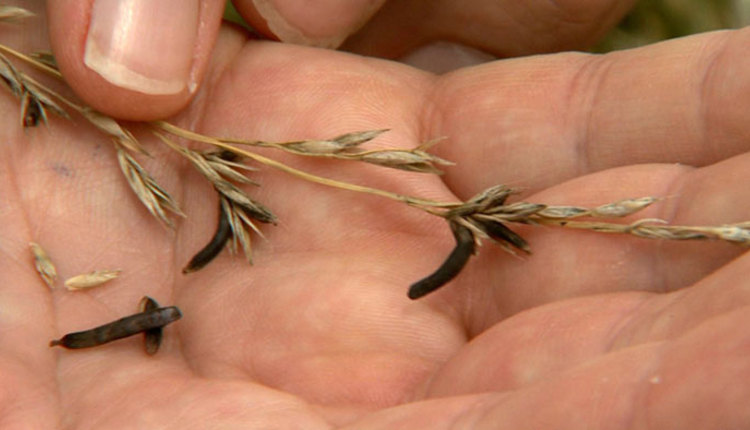
As grass seedheads develop this spring, take time to check for ergot development. That’s advice being offered by Craig Roberts, University of Missouri extension forage specialist.
Ergot fungal bodies that look like rodent droppings can develop and seemingly replace seeds on the seedhead of grasses. They can be found on cool-season grasses such as tall fescue and in winter cereal crops, especially rye.
“Ergot poisoning from eating infected crops or feed causes everything we don’t want to see in livestock,” Roberts explains. “Ergotism results in poor weight gain, poor milk production, poor reproduction, and even death.”
The alkaloid toxin in ergot-infected grasses is chemically related to the psychedelic drug lysergic acid diethylamide (LSD). During the Middle Ages, ergot poisoning killed thousands of Europeans who consumed bread made from rye that was contaminated with ergot fungal bodies.
“Ergotism is like fescue toxicosis on steroids,” Tim Evans, D.V.M., says. The University of Missouri extension veterinary toxicologist explains that it is not nearly as dependent on ambient temperature. He notes that the clinical signs of hoof and tail switch sloughing during the late spring and summer are generally indicative of ergot.
Evans cites the symptoms of ergot poisoning include:
• Lameness
• Hair loss and reddening around tops of hooves
• Sloughing of hooves or parts of limbs
• Losing tail switches
• Extreme heat stress
• Rapid breathing or panting
• Spending more time in ponds
• Possible staggering
• Occasional seizures
If ergot poisoning is suspected, Roberts recommends to immediately remove animals from infected pastures or stop feeding any supplemental feed that may be infected. He notes that ergot infection can vary between different areas in a pasture.
“Put up any hay as early as you can,” Roberts says. “Cutting early will avoid ergot bodies from developing on seedheads.”
Cutting hay later helps to reduce ergotism risk but does not eliminate it. “Although cutting late creates the potential to make poor quality hay, the toxicity of the hay may be cut in half by the time you feed it, and some ergot bodies may fall off during cutting and baling,” Roberts notes.

